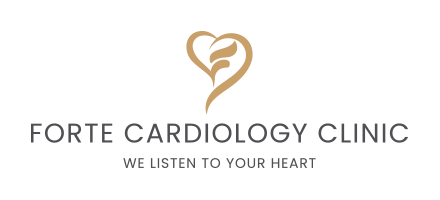Chest pain is a critical symptom that demands immediate attention due to its association with various underlying health conditions, particularly those related to the heart. Recognising the significance of chest pain is crucial as it can often signal a potential cardiac emergency. Prompt identification and appropriate action can make a substantial difference in outcomes and improve the chances of a favourable prognosis.
Understanding the potential causes of chest pain involves familiarising oneself with common heart conditions. These conditions may include coronary artery disease, myocardial infarction (heart attack), angina, and other cardiac issues. A comprehensive overview of these conditions is essential for early recognition and effective management.
Anatomy of the Heart
Understanding the heart’s anatomy is imperative to comprehend chest pain and its implications. The heart is a muscular organ in the chest, slightly left of the centre. It consists of four chambers – two atria and two ventricles – each vital in blood circulation.
The Role of the Coronary Arteries
The coronary arteries are pivotal in maintaining the heart’s health. These blood vessels supply oxygen and nutrients to the heart muscle. An obstruction or narrowing of these arteries can lead to ischemia (insufficient blood supply) and, in severe cases, result in a heart attack. Recognising the importance of coronary artery function is essential in understanding the potential causes of chest pain.
Heart Function and Blood Circulation
The heart functions as a powerful pump, circulating blood throughout the body to supply vital oxygen and nutrients. Understanding this dynamic process is fundamental in recognising abnormalities that may lead to chest pain. Any disruption in the coordinated rhythm of the heart’s contractions or issues with the blood vessels can manifest as chest discomfort, emphasising the interconnectedness of heart function and blood circulation.
Common Causes of Chest Pain
Chest pain can stem from various sources, both cardiac and non-cardiac. Understanding these potential causes is crucial for accurate diagnosis and effective management.
Cardiac Causes
1. Angina
Angina is chest pain or discomfort from reduced blood flow to the heart muscle. It is often triggered by physical exertion or stress and is indicative of an underlying issue, such as coronary artery disease.
2. Myocardial Infarction (Heart Attack)
A myocardial infarction, commonly known as a heart attack, occurs when blood flow to a part of the heart muscle is blocked, leading to damage or death of that tissue. This can cause intense chest pain, often radiating to the left arm, jaw, or back.
3. Pericarditis
Pericarditis involves inflammation of the pericardium, the sac surrounding the heart. This inflammation can lead to chest pain that may be sharp and is often exacerbated by breathing or changes in body position.
4. Aortic Dissection
Aortic dissection is a medical emergency with a tear in the inner layer of the aorta, the large blood vessel branching off the heart. This condition causes severe, sudden-onset chest pain and requires immediate attention.
Non-cardiac Causes
1. Gastroesophageal Reflux Disease (GERD)
GERD is a digestive disorder where stomach acid flows back into the oesophagus, causing irritation. This reflux can lead to chest pain, often mistaken for cardiac-related pain. It may be accompanied by acid regurgitation and a burning sensation.
2. Pulmonary Issues
Conditions affecting the lungs, such as pneumonia, pulmonary embolism, or pleurisy, can cause chest pain. The pain may be sharp and worsen with breathing or coughing, reflecting the respiratory nature of the underlying problem.
3. Musculoskeletal Conditions
Chest pain can result from muscle or joint issues in the chest wall. Conditions like costochondritis, an inflammation of the cartilage connecting the ribs to the sternum, or muscle strain can lead to localised chest discomfort that is not of cardiac origin.
Symptoms and Characteristics of Cardiac Chest Pain
Understanding the distinctive features of cardiac chest pain is essential for prompt recognition and appropriate medical intervention. The following factors provide insight into the symptoms and characteristics associated with cardiac-related chest pain.
Quality and Intensity of Pain
Cardiac chest pain often exhibits specific qualities that distinguish it from other types of chest discomfort. It is commonly described as:
- Pressure or Squeezing Sensation – Cardiac pain is frequently characterised by a feeling of pressure or squeezing in the chest rather than a sharp or stabbing pain.
- Heaviness – The pain may be experienced as a heavy, crushing sensation, contributing to discomfort.
- Prolonged Duration – Unlike brief, sharp pains, cardiac chest pain lasts several minutes or longer, sometimes persisting even with rest.
- Intensity – The intensity of cardiac chest pain can vary, with some individuals describing it as severe or intense.
Radiation of Pain
Cardiac chest pain often radiates to other areas of the body. Key patterns include:
- Left Arm – Pain may extend down the left arm, often reaching the elbow or even the wrist.
- Jaw – Discomfort may radiate to the jaw, particularly on the left side.
- Back – Pain can move to the back, between the shoulder blades.
Associated Symptoms
Cardiac chest pain is frequently accompanied by additional symptoms that indicate potential heart-related issues:
- Shortness of Breath
- Sweating
- Nausea and Vomiting
- Light-headedness or Dizziness
Differentiating Cardiac and Non-cardiac Pain
Differentiating between cardiac and non-cardiac chest pain is crucial for accurate diagnosis and appropriate intervention. Some features that suggest the likelihood of cardiac origin include:
- Exertional Trigger – Cardiac chest pain often occurs or intensifies with physical exertion or emotional stress.
- Relief with Rest or Nitroglycerin – Cardiac pain may subside with rest or medications like nitroglycerin.
- Risk Factors – Individuals with risk factors for heart disease, such as hypertension, diabetes, or a family history of cardiac issues, are more likely to experience cardiac chest pain.
- Age and Gender – Men and older individuals are more commonly affected by cardiac-related chest pain, although it can occur in women and younger individuals as well.
When to Seek Medical Attention
Timely recognition of the signs and symptoms of potential medical emergencies is crucial for ensuring prompt intervention and optimising outcomes. Here’s a guide to understanding when to seek medical attention, the importance of timely intervention, and the common diagnostic tests and procedures involved.
Recognising Signs of Emergency
Certain signs and symptoms warrant immediate medical attention and may indicate a medical emergency, especially when associated with chest pain. These include:
Severe Chest Discomfort – Intense, persistent pressure, squeezing, or heaviness in the chest that may radiate to the left arm, jaw, or back.
Shortness of Breath – Difficulty breathing, especially when accompanied by chest pain.
Sweating – Profuse sweating, described as diaphoresis.
Sweating – Profuse sweating, described as diaphoresis.
Nausea and Vomiting – Persistent nausea or vomiting.
Lightheadedness or Dizziness – Feeling faint or lightheaded.
Prolonged Symptoms – Chest pain that lasts more than a few minutes or is not relieved by rest.
History of Heart Disease – Individuals with a history of heart disease or associated risk factors should be vigilant.
If any of these symptoms are present, seeking immediate medical attention, such as calling emergency services, is crucial.
Diagnostic Tests and Procedures
Healthcare professionals may perform various diagnostic tests and procedures to determine the underlying cause upon seeking medical attention for chest pain. Common assessments include:
Electrocardiogram (ECG or EKG) – Records the heart’s electrical activity and can detect irregularities.
Blood Tests – Assess levels of cardiac enzymes, troponin, and other markers to identify heart muscle damage.
Chest X-ray – Helps evaluate the heart, lungs, and chest cavity for abnormalities.
Echocardiogram – Uses sound waves to create images of the heart, providing information about its structure and function.
Coronary Angiography – Involves injecting contrast dye into the coronary arteries to visualise blood flow and identify blockages.
CT Angiography – A non-invasive imaging technique to assess blood flow and detect blockages in the coronary arteries.
These tests aid in diagnosing the cause of chest pain and guide healthcare professionals in determining the most appropriate course of treatment.







